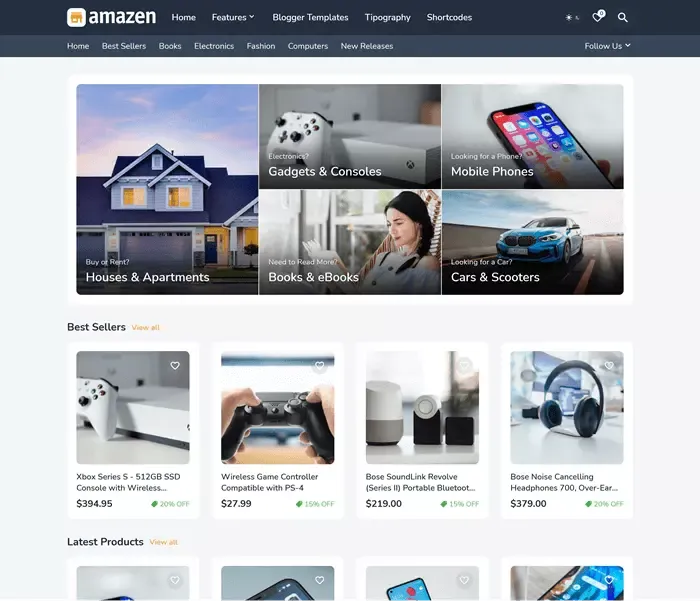What is Product Market Fit?
Optimism and a revolutionary way of thinking are needed to start a
good startup. Why? Because 90% of startups fail in the early stages of
development. The reasons why startups fail are numerous, but one of the most
obvious is certainly the founders' excessive focus on the product and its
development. Most founders are accustomed to moving in their comfort zone,
thinking little about customers, their needs, the market, the business model,
etc.
In order not to be just another number in the mentioned
statistics and to avoid the mistakes that many of the founders make, it is
essential to find out if there is a demand for your product on the market. How
can you find out? With Product-Market Fit.
{tocify} $title={Table of Contents}
What is Product Market Fit?
It is a concept that can bring you long-term benefits and make your
product successful in the market. Marc Andreessen, an American entrepreneur,
defined Product-Market Fit as "A good market with a product that can satisfy
that market."
Three key concepts need to be understood for PMF:
Good Market - This means that your market is
large enough to allow you to grow and expand your business.
Good product -
It means that the product does what it promises and does it well.
Market Satisfaction -
Refers to whether you have met the specific needs of customers in a way that
is better than the way the competition offers.
Product Market Fit
is one of the components of the Lean methodology we talked about in one of our
previous blog posts, which you can read
here.
How to achieve Product Market Fit?
Achieving Product Market Fit is often not an easy process, and it is key
to a successful business.
You can do the following:
- Adapt your product to new markets,
- Rearrange or reorganize old ideas,
- Go where your market is or
- Create a whole new service.
The choice is yours. Whichever option you choose, keep in mind
that it is necessary to constantly research and work on improving your
product.
How do you know if you are in the right market with the right product?
Companies that do not find Product Market Fit face several problems.
Some of these problems are as follows:
- Customers do not understand the value of their product,
- They do not recommend them to their friends, acquaintances,
- Small sales,
- Too long sales cycles,
- Difficulties in attracting media attention, etc.
Conversely, when a Product Market fit is achieved:
- Customers ask you to pay for the product before you officially put it on sale,
- The products disappear from the shelves as soon as they are launched,
- Customers complain when they can't get to your product,
- You have full media attention,
- Journalists can't wait to write about the company and the great, revolutionary product in their articles.
- There are a lot of repeat purchases,
- There is a constant need to increase the team, etc.
Think about where you are at the moment. Which of these two situations
describes you better, and you will know if you have found your Product Market
fit.
Many companies manage to find their Product Market Fit right after launch, but
keep in mind that behind that success lies months or years of research and
attempts to reach PMF.
How to measure Product Market Fit?
To find out if you are achieving the desired results, it is necessary to
define the key indicators for PMF that you will monitor. The most common
methods used to measure and validate Product Market Fit:
40% Rule
Sean Ellis, an American entrepreneur, found that the leading indicator
of Product / Market Fit is to ask a simple question to your customers:
"How would you feel if you could no longer use this product?" Customers
have the opportunity to give the following answers:
- Very disappointed,
- I'm a little disappointed,
- I'm not disappointed at all.
Once you get the answers, your next step is to measure the percentage of
“Very disappointed” answers.
Sean Ellis has revealed that
the magic number for Product Market Fit is 40%. Companies struggling to
find growth almost always have less than 40% of users who give the answer in
the survey: "Very disappointed," while companies with a strong scope almost
always exceed that threshold.
NPS - Net Promoter Score
The Net Promoter Score is a scale ranging from 0 to 10 that measures a
customer's willingness to recommend a company's products or services to
others. It is used as an indicator of overall customer satisfaction with a
company’s product or service and brand loyalty.
The basic idea of
measuring this index comes from a simple NPS survey that asks one question:
How likely are you to recommend our company/product/service to a friend or
colleague?
The customer is given a range of 0 to 10 to answer this question. Depending on the results given based on the given question, three categories appear:
- Promoters - These are respondents who give a grade of 9 or 10, they are considered loyal customers. These are users who often buy a given product or service and who will usually recommend that product to others. They are often called "ambassadors" of products.
- Passives - Respondents who rate 7 or 8. These are those who may use your product from time to time, but this does not necessarily mean that they like the solution, and, likely, they will not even promote the product.
- Detractors - Respondents who give a score from 0 to 6 are called outlaws. These are people who do not like the product and can very often give negative feedback about it.
What you should not forget in the process of confirming or measuring Product
Market Fit, and what Steve Blank advises us is:
"Get out of the building (and talk to your customers)."
Analytics
When it comes to online business, there are several indicators you can
use to find out if you have achieved Product Market Fit. Some of them are:
- Bounce Rate - refers to the percentage of visitors who came to the site and did not perform any activity. Low visit rates for just one page can mean that it meets the expectations of the visitor.
- Time on Site - This refers to the average time visitors spend on a website and indicates whether the user experience is satisfactory.
- Pages per Visit - Refers to the average number of pages that visitors viewed on a website,
- Returning Visitors - Refers to the number of visitors who constantly return to your website because of your product, service, useful information they may receive, or for some other reason.
- Customer Lifetime Value - Refers to measuring the profitability that each customer brings to the company, etc.
If you find that you are given indicators above average, you will know
that you have achieved Product Market Fit.
Famous startups that have found their Product Market Fit
Slack: Each user counts.
Slack, an instant messaging platform often used for communication in the
workplace started as a completely different business idea. The founders were
in the development phase of video games, while Slack was something secondary
that they developed and used as an internal means of communication.
They quickly realized that there are a lot of people involved in
video game development and that there is nothing like Slack, and they changed
their focus.
Slack's quick turnaround proves that changing the focus and better adapting to
the product market can really bring a lot. Slack made its way to Product /
Market fit by focusing on individuals and team users who were happy to share
their satisfaction with the app, which means that Slack has managed to turn
its customers into a major marketing force.
By constantly collecting feedback from customers, they managed to:
- To increase customer satisfaction,
- To return to the product faster and improve it,
- To increase sales and usage of the application.
Today, Slack is used by over 10 million people.
Dropbox: Go where your market is.
Dropbox was founded in 2007 by MIT students Drew Houston and Arash
Ferdowsi as a startup company, with initial funding from Seed Accelerator and
Y Combinator.
Today, Dropbox is considered one of the most valuable
startups in the U.S. and the world, with an estimate of over $ 10 billion, and
one of Y Combinator’s most successful investments.
Drew Houston,
one of the founders, devised two successful methods by which they managed to
achieve their Product Market fit.
First: He recorded his
now-famous four-minute video
featuring Dropbox and showing all of its functionality, and shared it on the
then-news gathering page, Digg. Instead of testing multiple distribution
channels, Houston took advantage of the already existing audience in Digg.
Digg's user base (younger, technologically smart) had a lot of early
adopters.
Second: Dropbox has launched a viral referral
campaign. They rewarded existing users with additional storage space if they
would recommend using Dropbox to friends.
Dropbox managed to find a suitable market for its product, which was the key
to its success. What Dropbox has achieved, according to Lars Lofgen, is
explained in the following terminology:
"Sticky Engine of Growth" -
Do everything possible to keep your customers coming back to you from month to
month. Once you have an extremely low spending rate, you only need to acquire
a few new customers to continue your growth. Before you start finding new
customers, it is necessary to focus on the current ones. That is the
essence.
"Viral Engine of Growth" - Refers to the
recommendation and advertising of your product by customers. What is crucial
is to ensure that every customer brings their friends to your business. If 10
customers bring you 11 of their friends, your business will grow quickly.
Because those 11 will bring 11 (or 12) of their friends. Each group will be
larger than the previous one, and you will get complex growth. However, the
Viral Engine of Growth requires great caution. To be able to rely on viral
marketing, your product must be exceptional and must perfectly suit your
target market, otherwise, you may be left without customers, which you do not
want.
Spotify: Attack the gray area. Disasters often have an opportunity.
In the early 2000s, just before Spotify came out, it was a pretty tough
time for the music industry. Album sales were declining as users turned to
music online, which was often illegal.
Daniel Eck, one of the
founders of Spotify, at the time had a simple business idea in mind - to
provide easily accessible music and charge for its legal listening for a small
fee. There was a large market of music lovers who were willing to pay a small
amount to listen to their favorite songs without any problem with legality.
The secret to Spotify’s success is that the company
identified a huge opportunity among music consumers and then
worked harder than any other company to achieve just the Product-Market
fit.
Conclusion
What we can conclude is that Product Market Fit is crucial for the
success of any entrepreneurial venture. Once you achieve Product-Market Fit,
you can focus on optimizing your product, hiring efficiency experts, and
making strategic investments.
Also, you have managed to go much
further than most startups dream of. The next step you need to go through on
your path to success is Scaling Fit. You will have the opportunity to learn
more about this phase of the Lean methodology in one of the following blog
posts.









